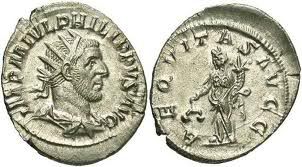Από το μέλαν στο λευκό (32β) [χρωματικές συνομιλίες] – naming black and white
Χρωματικές Συνομιλίες (32β)
Από το μέλαν στο μαύρο και από το λευκό στο άσπρο

Η λέξη ΜΕΛΑΝ χρησιμοποιείται για την περιγραφή κάθε μελανωπού, σκούρου, πράγματος, ακόμα και αν δεν είναι τελείως μέλαν = μαύρο, πράγμα που συμφωνεί με την καταγωγή της λέξης ΜΑΥΡΟΣ που προέρχεται από το ΑΜΑΥΡΟΣ.
Κατά τον Κούρτιο, η ρίζα της λέξης μέλας βρίσκεται στο ρήμα μολύνω και όντως ό,τι μολύνει αμαυρώνει (λερώνει). Το αμαύρωμα του φωτός μας οδηγεί προς το σκοτάδι, το μαύρο. Η λέξη άμαυρος (αμαυρώνω) είναι αγνώστου ετυμολογίας και ίσως συνδέεται με το ΑΜΥΔΡΟΣ που αρχικά είχε τη σημασία του μη καθαρού, του συσκοτισμένου, του εξασθενημένου.
Από το μαύρο πάμε στο άσπρο, ή πώς το λευκό κατέληξε να ονομάζεται άσπρο.
Το ΑΣΠΡΟ κατάγεται από το λατινικό ASPER = τραχύς. Έτσι ονομάστηκαν τα ασημένια χαραγμένα ρωμαϊκά νομίσματα, τα nummi asperi, που λόγω του ασημένιου χρώματός τους (τα άσπρα) μετονόμασαν το λευκό σε άσπρο, λέξη που αντικατάστησε την προηγούμενη από τους βυζαντινούς χρόνους.
Η παλαιότερη λέξη ΛΕΥΚΟΣ υπάρχει από τη μυκηναϊκή εποχή σαν re–u–ko. Κατά τους ειδικούς γλωσσολόγους πιθανολογείται πως προέρχεται από την ινδοευρωπαϊκή ρίζα leuk ή luq, απ’ όπου εξάγεται το ελληνικό λυκαυγές (κι’ απ’ αυτό οι λύκοι) και τα λατινικά luz, luna και κατ’ επέκταση light, που όλα σχετίζονται με το φως.
Οι λύκοι, που αναφέρθηκαν εντός παρενθέσεως μόλις προ ολίγου, μας παραπέμπουν στην κοκκινοσκουφίτσα, κι’ αυτή με τη σειρά της στο κόκκινο χρώμα, το οποίο θα μας απασχολήσει την επόμενη φορά.


Translated into English
From “melan” black to “mavro” black
And from “lefko” white to “aspro” white
The term “melan” is used by ancient Greeks to describe any black or very dark thing, even if not completely black, which agrees with the origin of the newer word MAVROS for BLACK that comes from the word AMAVROS (blurry, stain).
According to Curtius, the root word for “Melas” (black) is the verb “molyno” (pollute) and indeed whatever infects stains. The “amavroma” (besmirchment, stain) of light leads to darkness (black). The Greek word for blurry (amavrono) is of unknown etymology, and perhaps linked to AMYDROS the word that means “not clear”, “unclean”, “not well lighted”, “weakened”.
Now, from black let’s go to white, or how the “lefko” white became to be called “aspro” in newer Greek language.
Aspro (white) comes from the Latin word ASPER = rough. So were named the engraved silver Roman coins “nummi asperi” and due of their silver – white color renamed the “lefko” white to “aspro” white, a word to replace the former since the Byzantine period.
The oldest word “lefko” for white was found at the Mycenaean period as re-u-ko.
By some specific linguists assumed to come from the Indo-European root leuk or luq, from which derived the Greek word for dawn light “lykavges” (and by that the word wolf, because actually “lykavges” = twilight means the “dawn of the wolfs”) and Latin words luz, luna and thus light, all of which related to lighten.
Wolves, reported in brackets just now, are reminding Little Red Riding Hood, and she in turn the red color, which will occupy us next time.
admin is | Topic: Λευκό, μαύρο, Χρωματικές Συνομιλίες | Tags: None

No Comments, Comment or Ping
Reply to “Από το μέλαν στο λευκό (32β) [χρωματικές συνομιλίες] – naming black and white”